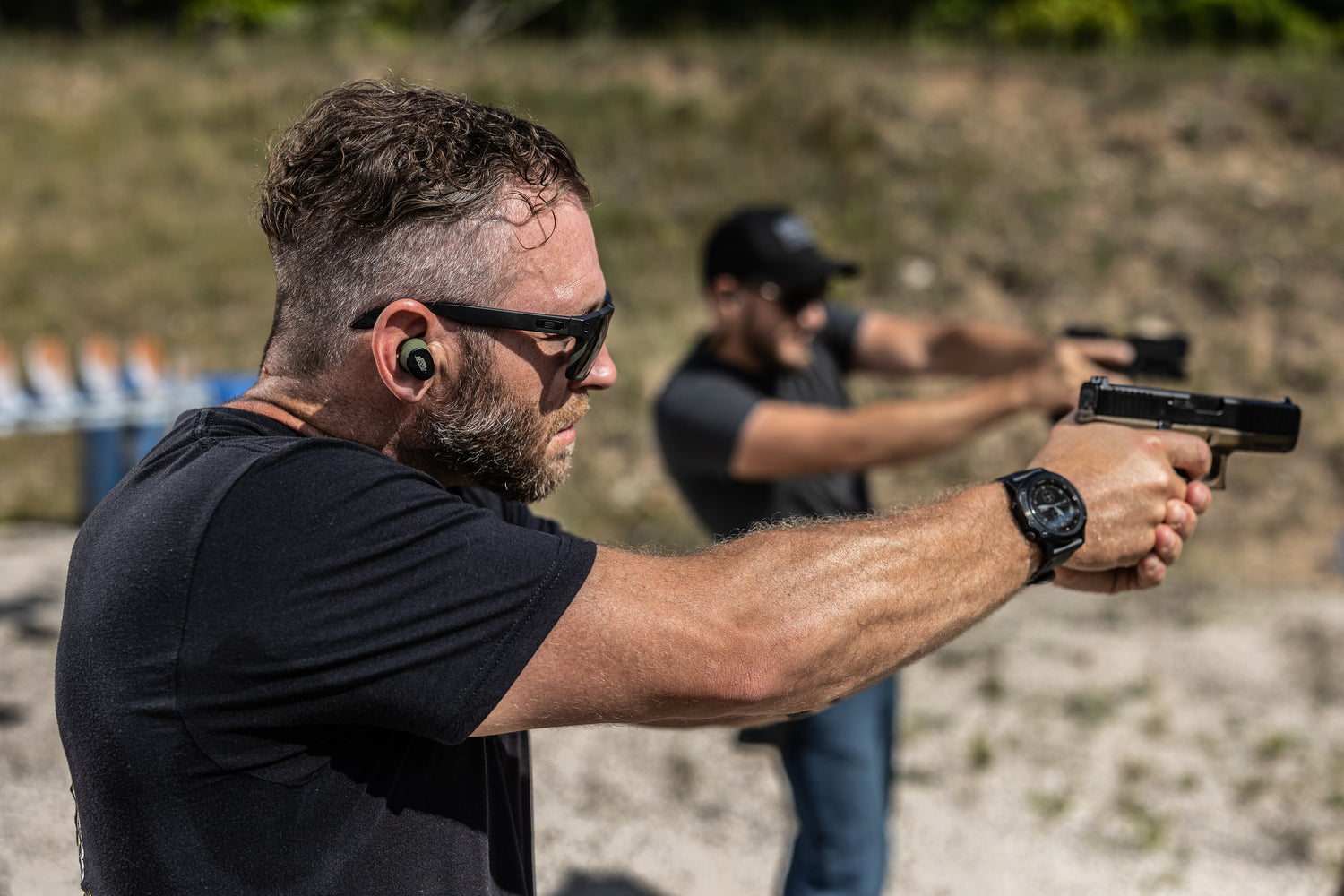Lead and waste management at gun ranges is a real concern. Whether you’re an owner, professional armsmen, or casual hobbyist, it’s essential to take care of your immediate firing range. NSSF hosted an online webinar about the importance of environmental management with expertise provided by Dr. Dick Peddicord. Thankfully we attended the webinar to help you learn the importance of environmental management at the range. Read on for our key takeaways.
What’s the issue?
When firing a gun, you can almost always guarantee there to be debris and remnants from your shots. Called “shot fall” this debris usually ricochets in many directions, landing on the ground and backstops. Without proper maintenance and surveillance, shot fall can accumulate and concentrate in areas you wouldn’t expect. Depending on the range and field, the approximate area of shot fall varies; skeet field and trap fields differ in shot fall range. Lead is the primary material found in shot fall, and according to federal laws, if not properly managed, lead can be defined as waste. A few federal regulations targeted toward environmental management encompass the management of gun ranges. The Resource Conservation and Recovery Act and the Comprehensive Environmental Recovery, Compensation and Liability Act are both concerned with how shots and bullets are handled.
If shot and bullet material, including any lead remnants, is recycled or properly managed, it is not waste. However, waste is classified as shot and bullet material that is abandoned. As soon as this material becomes waste, it is classified as hazardous.
Why should I be concerned?
Following environmental management at gun ranges is like complying with driving laws. If you are found in violation of these laws and regulations, you can get remediation costs or large fines. In extreme cases, this can result in huge lawsuits. According to the Clean Water Act (CWA), a permit is required to “discharge” a “pollutant” from a “point of source” into “waters of the United States”. In this case, bullets are considered pollutants, the position of where you stand in the firing is considered a point of source, and any body of water can be considered waters of the United States. If a body of water is questionable yet ignored, this violates the Clean Water Act and can result in fines.
How can I implement lead management?
Organizations such as the NRA and NSA suggest implementing an Environmental Stewardship Plan (ESP). When you practice Environmental Stewardship, you are responsible and care for the resources entrusted to you. An ESP is not required by law but is highly encouraged. It’s specific to your site, is proactive when an issue does arise, and plans and justifies expenditures. Here are some things to consider when developing an ESP:
- What are the relevant conditions in my range? Where are the targets? Where is the lead in relation to water, property lines, etc.
- The acidity of the soil, runoff, topography
- Habitat quality
- Vegetation, soil type
- Identify environmental issues through:
- Assessing existing conditions
- Addressing public concerns
- Litigation and regulatory action
- Discussion with NSSF
- Proactive environmental audit
- Working with a consultant with range experience
Some additional solutions are to avoid shooting into water and off your property, as well as stormwater management. Lead dissolves in water, however even-dissolved lead ions can dissolve in 41 minutes. If you fire non-traditional ammunition, you can also avoid the concern of lead. A final suggestion is to apply lime to soil that’s already acidic. Lime can help with lead dissolution; however, excessive use can alter your environment. This tip is best for soil with a PH between 6.5 - 8, and it would require periodic replenishment.
Key Takeaways
Environmental concerns are all manageable and not something to be afraid of. With a proactive awareness and plan, ranges can protect their environment. Having a plan and not putting it into action is almost worse than having no plan at all. Research additional best practices for curating an ESP, and check out NSSF for additional resources about gun ranges and firearms.


